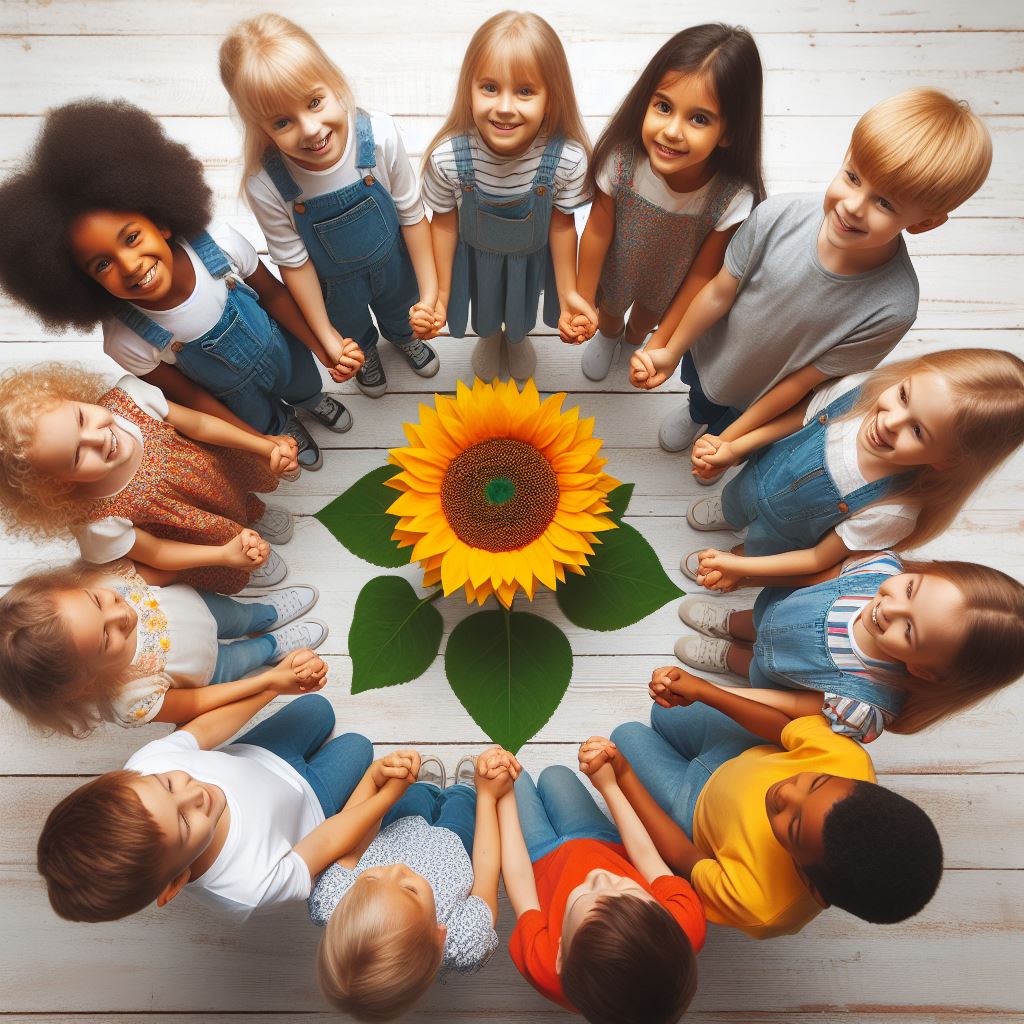Parents and caregivers often find themselves pondering over what valuable traits to nurture in their young ones. Among the myriad of qualities that form the bedrock of a well-rounded individual, generosity and gratitude stand out, not merely as commendable virtues but as fundamental elements that catalyze a child’s holistic development. Understanding how these attributes contribute to increased happiness, improved relationships, and a deeper sense of empathy enriches our approach to parenting and education, instilling lifelong benefits that extend well beyond childhood.
The Essence of Generosity in Children

Generosity stands as a core virtue that transcends the mere act of giving; it embodies a comprehensive mindset characterized by sharing, kindness, and compassionate interaction with the world. When children are nurtured to adopt generosity from an early age, they learn a valuable lesson—that the happiness derived from giving often eclipses the joy found in receiving. This fundamental principle is critical, fostering the development of selflessness among young minds.
By instilling the essence of generosity in children, we lay a solid foundation for them to grow into empathetic and giving adults, naturally inclined to make positive contributions to their communities. Such an upbringing enriches the children’s own lives, imbuing them with a sense of satisfaction and fulfillment that comes from enriching others’ lives.
Teaching generosity promotes the understanding that true wealth lies in the strength of one’s character and the quality of one’s relationships with others.
The Power of Gratitude
Nurturing a spirit of gratitude in children is as critical as fostering generosity. Gratitude goes beyond simple manners; it is an in-depth acknowledgment of kindness and a sincere appreciation for the multitude of blessings in our lives. Instilling this sense of gratefulness encourages children to reflect on and appreciate the myriad of ways their lives are enriched by others. It shifts their focus from what they lack to the abundance that surrounds them, fostering a positive mindset and a greater openness to the world.
By teaching children to recognize and express gratitude, we empower them to look past their immediate wants and to value the individuals and experiences that truly enrich their existence. This practice significantly enhances their ability to forge and deepen connections with others. Gratitude, by its nature, requires acknowledging the role others play in our lives, thereby fostering a sense of community and mutual respect.
Gratitude has been linked to numerous positive outcomes, including increased optimism, better physical health, and enhanced mental resilience. Children who practice gratitude learn to manage adversity with a healthier outlook, seeing challenges as opportunities and setbacks as temporary. This resilience is a cornerstone of emotional well-being and success.
The Path to Increased Happiness
The intricate relationship between generosity and gratitude and their collective impact on enhancing happiness is both intriguing and profound. Research demonstrates that these virtues activate neurological pathways in the brain associated with pleasure, social bond, and trust. This neurological stimulation initiates a virtuous cycle, reinforcing these positive behaviors and emotions further.
What’s particularly noteworthy is how children, when encouraged to practice generosity and gratitude, learn to experience happiness through means that are not reliant on material acquisitions. Instead, they find joy in the simple yet impactful act of contributing positively to someone else’s life.
This approach to happiness, emphasizing the importance of altruism and thankfulness over material wealth, offers a promising direction for personal growth and well-being. It underscores the idea that true happiness does not emanate from the transient pleasure derived from possessions but from the deeper, more lasting satisfaction that comes from connecting with others and contributing to their well-being. This realization serves as a beacon, guiding individuals towards a more meaningful and joyful path in life, where the true essence of happiness is discovered in the richness of our interactions and the generosity of our spirits.
Fostering Improved Relationships
As children explore the intricate world of social interactions, the importance of generosity and gratitude becomes unmistakably clear. These virtues serve as foundational building blocks for establishing and nurturing stronger relationships. When children engage in acts of kindness and openly express their gratitude, they gain insight into the delicate balance of giving and receiving that characterizes all healthy relationships. By embedding these practices into their daily routines, children are equipped with essential social skills.
Generosity teaches children the value of thinking beyond their own needs and desires, encouraging them to contribute positively to the lives of those around them. This selfless act fosters a sense of community and belonging, signaling to others that they are valued and appreciated. On the other hand, expressing gratitude allows children to acknowledge and appreciate the kindness and efforts of others, reinforcing positive behaviors and strengthening bonds between individuals.
Together, generosity and gratitude play a pivotal role in helping children develop empathy. This critical skill enables them to understand and resonate with the emotions and experiences of others, fostering deeper connections and a more empathetic worldview. As children become more attuned to the feelings of their peers, they cultivate a supportive and compassionate network of relationships.
Incorporating these virtues into daily life equips children with the tools necessary to navigate the complexities of human relationships effectively. As they grow and mature, the lessons learned from practicing generosity and gratitude will continue to influence their interactions, leading to more meaningful and fulfilling connections with others.
Cultivating a Deeper Sense of Empathy
Empathy, the capacity to understand and share the feelings of others, is the cornerstone of both generosity and gratitude, acting as the glue that unites us in our common humanity. This training in empathy, facilitated by regular acts of kindness and moments of thankfulness, deepens their ability to connect with those around them.
When children practice putting themselves in the shoes of another, they develop a critical skill set that transcends mere social interactions. This ability fosters a more profound sense of understanding and tolerance, qualities that are vital in today’s diverse world. Generosity, in this context, becomes more than just sharing material possessions; it evolves into a willingness to share time, attention, and emotional support. Similarly, gratitude goes beyond mere politeness, becoming a heartfelt appreciation for the kindness and efforts of others, which further solidifies social bonds.
This cultivation of empathy enriches children’s personal lives by enhancing their capacity for meaningful relationships and positions them as compassionate contributors to their communities. Children who learn to empathize with others are more likely to become adults who value cooperation over conflict, understanding over indifference, and who actively seek to make positive changes in their surroundings.
Practical Strategies for Parents and Caregivers
Integrating the principles of generosity and gratitude into the daily lives of children doesn’t have to be a daunting task. With practical strategies, parents and caregivers can foster these virtues effortlessly, creating a nurturing environment where kindness and appreciation flourish. Here are some effective practices to consider:
- Make Kindness a Habit: encourage children to perform acts of kindness regularly. This could be as simple as sharing a snack with a friend or helping a sibling with homework. Emphasize that these acts of generosity are part of being a caring individual.
- Involve Children in Giving: allow children to participate in selecting toys or books that they would like to donate to others. This activity teaches children the value of sharing their blessings with those less fortunate. Highlighting the happiness their generosity brings to others can instill a lasting sense of joy and satisfaction.
- Create a Gratitude Space: setting up a gratitude jar or board where family members can jot down things they are thankful for makes gratitude a visible and tangible concept. This practice encourages children to regularly reflect on the positives in their lives, fostering an attitude of thankfulness.
- Discuss Empathy and Feelings: use storytelling or real-life scenarios to talk about feelings and teach empathy. Discussing how different characters in a story might feel or exploring how someone else might view a situation helps children develop the ability to empathize with others.
- Praise and Model Generosity and Gratitude: acknowledge and praise children when they display generosity and gratitude. Positive reinforcement makes these behaviors more likely to be repeated. Equally important is leading by example. Demonstrate generosity in your actions and express gratitude openly. Children are keen observers and often emulate the behaviors they see in adults.
- Share Experiences of Generosity and Gratitude: discuss your own experiences of giving and receiving kindness and the emotions associated with these actions. Sharing personal stories of generosity and gratitude can deeply resonate with children, providing them with concrete examples of these abstract concepts in practice.
By adopting these straightforward strategies, parents and caregivers can significantly influence their children’s development of generosity and gratitude. Through consistent practice and modeling of these virtues, children can learn the importance of kindness and appreciation, setting the foundation for a lifetime of positive relationships and emotional well-being.

